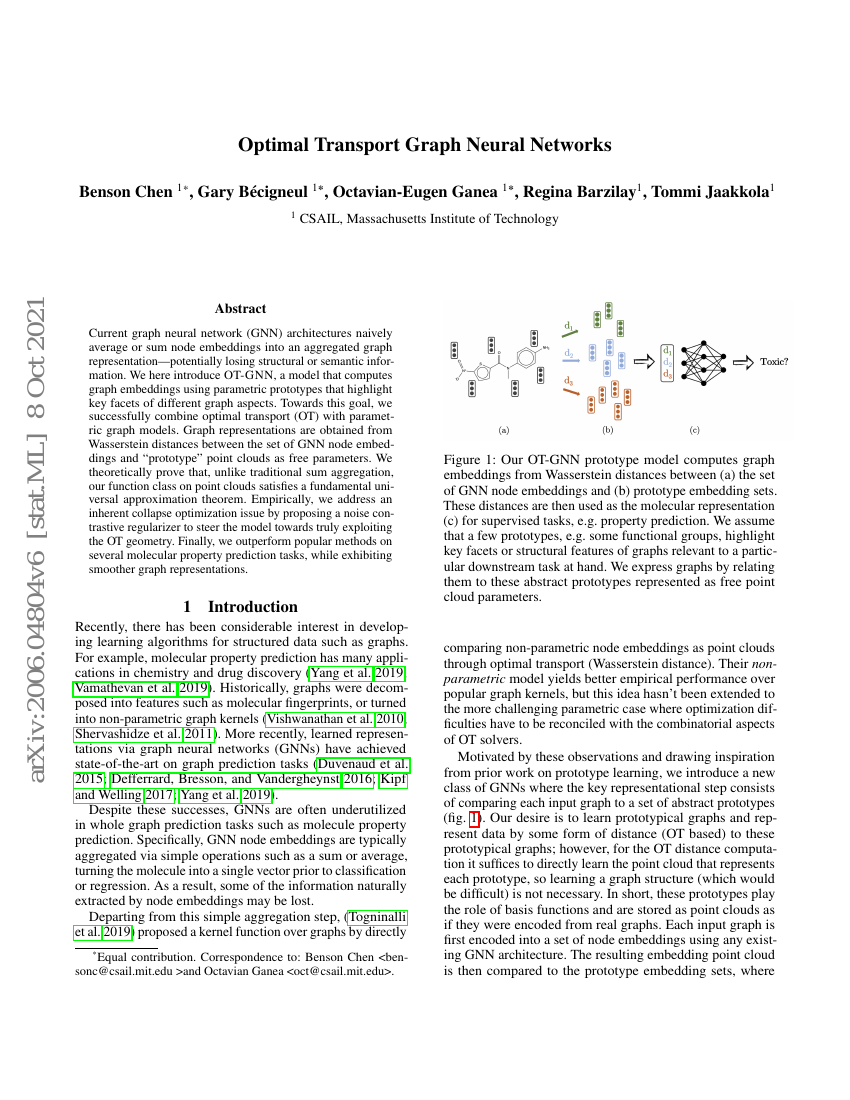Command Palette
Search for a command to run...
Benson Chen Gary Bécigneul Octavian-Eugen Ganea Regina Barzilay Tommi Jaakkola

Abstract
Current graph neural network (GNN) architectures naively average or sum node embeddings into an aggregated graph representation -- potentially losing structural or semantic information. We here introduce OT-GNN, a model that computes graph embeddings using parametric prototypes that highlight key facets of different graph aspects. Towards this goal, we successfully combine optimal transport (OT) with parametric graph models. Graph representations are obtained from Wasserstein distances between the set of GNN node embeddings and ``prototype'' point clouds as free parameters. We theoretically prove that, unlike traditional sum aggregation, our function class on point clouds satisfies a fundamental universal approximation theorem. Empirically, we address an inherent collapse optimization issue by proposing a noise contrastive regularizer to steer the model towards truly exploiting the OT geometry. Finally, we outperform popular methods on several molecular property prediction tasks, while exhibiting smoother graph representations.
Code Repositories
Benchmarks
| Benchmark | Methodology | Metrics |
|---|---|---|
| drug-discovery-on-bace | ProtoW-L2 | AUC: 0.873 |
| drug-discovery-on-bbbp | ProtoW-L2 | AUC: 0.92 |
| graph-regression-on-esol | ProtoW-dot | RMSE: .594 |
| graph-regression-on-lipophilicity | ProtoS-L2 | RMSE: 0.580 |
Build AI with AI
From idea to launch — accelerate your AI development with free AI co-coding, out-of-the-box environment and best price of GPUs.